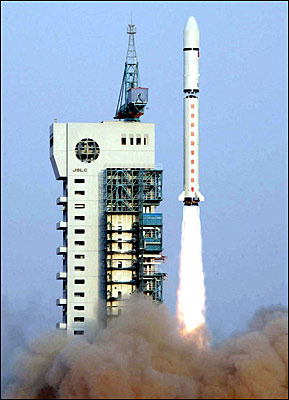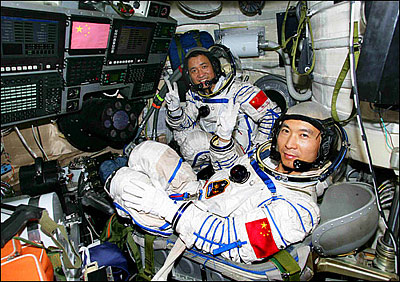As the fifth country to develop and launch an independent man-made satellite and the third to master satellite recovery technology, China is in the world's front ranks in many important technological fields, including satellite recovery, carrying of multiple satellites on one rocket, rocket technology, and the launch, test and control of static-orbit satellites. Great achievements have been made in remote-sensing satellites, communications satellites, and in manned space experiments.

Manned spacecraft. On October 15, 2003, the first manned spacecraft "Shenzhou V," developed independently by China, was successfully launched at the Jiuquan Satellite Launch Center, following the four unmanned launches between November 1999 and December 2002. "Shenzhou V" sent China's first astronaut into space and returned safely, making China the world's third country to independently develop and deploy manned space flight technology. On October 12, 2005, the "Shenzhou VI" spacecraft was successfully launched, marking an important new milestone in China's manned space flight. "Shenzhou VI" carried two men on a five-day flight compared with "Shenzhou V's" one-man, one-day voyage. "Shenzhou VI" made breakthroughs in many basic astronautic technologies and it was the first time that scientific experiments were carried out in space with astronaut participation. The next goals of China's manned space project include astronaut extra-vehicular activities and spacewalks. Between 2009 and 2012, China will achieve in-orbit rendezvous-docking of targeting flight vehicles.

